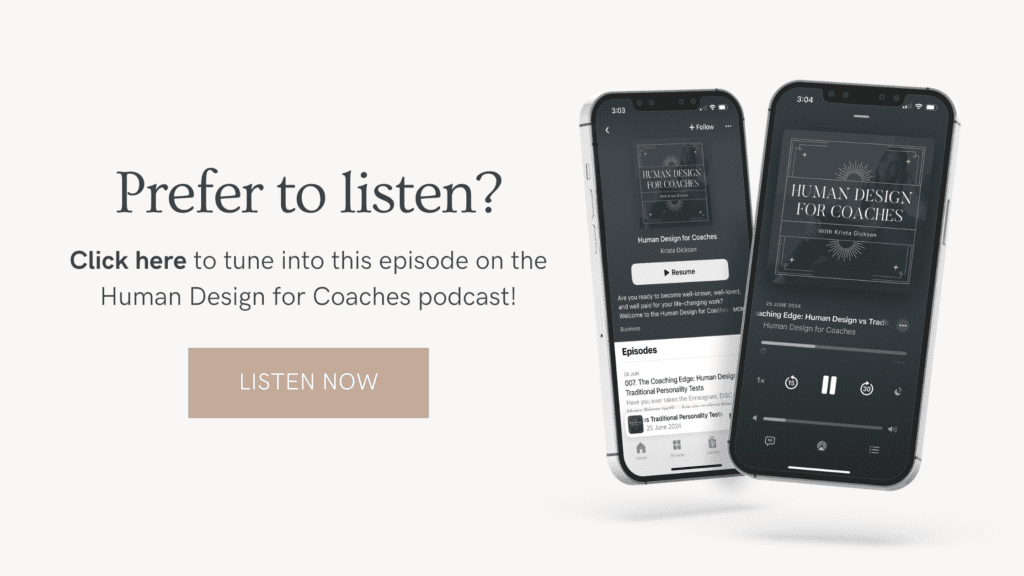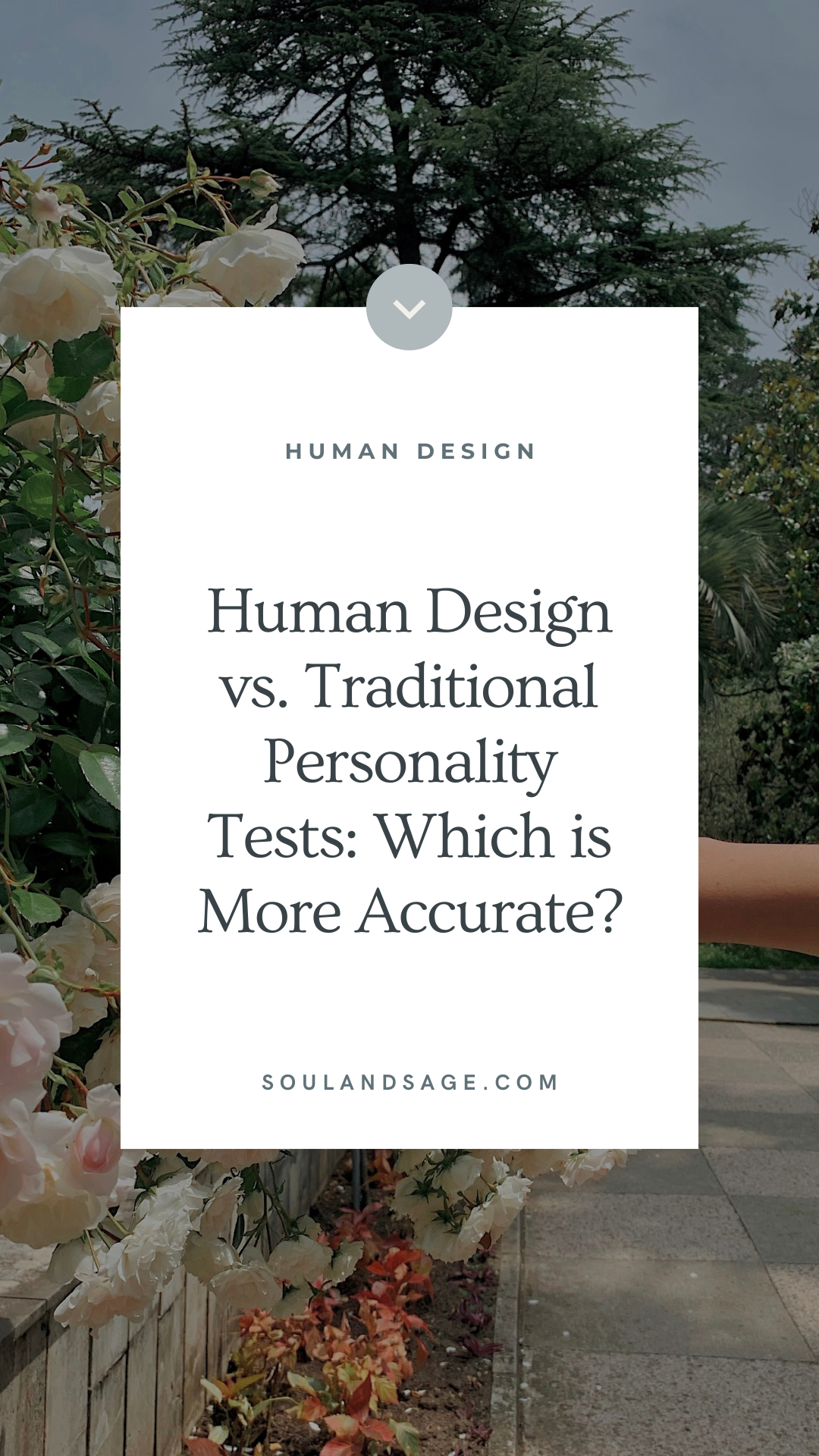Curious about the differences between Human Design and popular personality tests like the Enneagram or Myers-Briggs? While they might seem similar on the surface, they actually serve very different purposes. Especially if you’re a coach looking to better understand your clients (or yourself!).
In this post, we’ll explore why Human Design can offer deeper, more transformative insights than traditional personality tests do, and how HD can become the most powerful tool in your coaching arsenal. Ready?


Human Design vs Personality Tests: What’s the Real Difference?
Most traditional personality tests, like the Myers-Briggs Type Indicator (MBTI) or the Enneagram, rely on self-assessment. You answer a series of questions, and the system categorizes you based on how you perceive yourself at the time.
But Human Design works differently, because there’s no questionnaire involved. Your chart is generated using your birth date, time, and place—and from there, i based on the energetic imprint of the planets at the exact moment you were born.
That means your Human Design chart isn’t shaped by how you see yourself. It’s based on who you actually are underneath all the conditioning, and before society told you who you “should” be.
The Problem with Personality Tests
Don’t get me wrong, self-assessment tests have their place. They can spark self-reflection, highlight your values and preferences, and give you a starting point for personal development. But with that said, they’re also:
- Prone to bias (because we all have blind spots!)
- Influenced by your life stage, mood, or conditioning
- Easily changeable over time
For example, you might take the MBTI in your 20s and get one result, and then take it again in your 30s and get something completely different. That’s because personality tests reflect who you think you are in the moment, not necessarily your most aligned, authentic, underneath-it-all self.
Why Human Design Offers a Deeper Perspective
What makes Human Design such a powerful tool is how much deeper it goes than traditional personality tests.
Your Human Design BodyGraph includes two big pieces:
- Your conscious (personality) side – the parts of yourself you’re usually aware of
- Your unconscious (design) side – traits others see in you before you recognize them yourself
This combination gives you a holistic, unbiased snapshot of your energy, strengths, and potential, without the filter of self-perception (which is subjective and prone to bias).
For Example: One of my students is a Generator in Human Design, but didn’t feel like one at first. When I looked at her chart, I saw that her only Generated Channel (the one that defines her Sacral Center and therefore makes her a Generator) is completely unconscious in her chart. So it makes sense why it didn’t fully resonate with her at first!
The Hidden Influences of Conditioning
Another reason Human Design goes deeper is its ability to account for energetic conditioning.
Our upbringing, relationships, and society all shape how we see ourselves, and that plays a huge role in how we answer questions on personality tests. Someone raised to be modest may understate their strengths, while someone experiencing burnout might not identify with their natural Energy Type.
Human Design bypasses all of that. It reveals the core of who you are, before the world told you who to be.
Why Coaches Love Human Design
For coaches, how Human Design stacks up compared to traditional personality tests is more than just a fun debate; it’s about effectiveness.
Human Design allows you to:
- Get to the truth beneath the surface with your clients
- Tailor your coaching approach to how someone is designed to operate
- Support your clients in deconditioning and returning to their authentic self
- Go beyond “self-improvement” and into deeper self-understanding
As an added benefit, Human Design can be applied across all areas of life: relationships, health, parenting, decision-making, career, business strategy, and so much more.
Why It Can Feel Complicated (and Why That’s Okay!)
The only downside? Human Design isn’t as instantly digestible as a personality test result. You can’t just glance at your chart and “get it.” It’s detailed, it’s layered, and it will almost certainly feel overwhelming at first.
But that’s where learning the system (and having a guide!) makes all the difference.
As a coach, once you understand how to read your client’s Human Design charts, you’ll never want to go back to surface-level tools again. You’ll be able to help clients understand themselves more deeply than ever, and create meaningful breakthroughs that last.
Ready to master Human Design and start confidently using it with your clients?
Watch my free 25-minute on-demand masterclass and learn the exact process for making your coaching more personalized and impactful with Human Design.
🌿 Check out the free class here

TL;DR – Human Design vs Personality Tests
| Personality Tests | Human Design |
|---|---|
| Based on self-assessment | Based on birth data |
| Can change over time | Stays consistent throughout life |
| Reflects how you see yourself | Reflects who you are at your core |
| One layer of insight | Multi-layered, holistic understanding |
| Great for surface-level insights | Best for deep personal transformation |

Share this post: